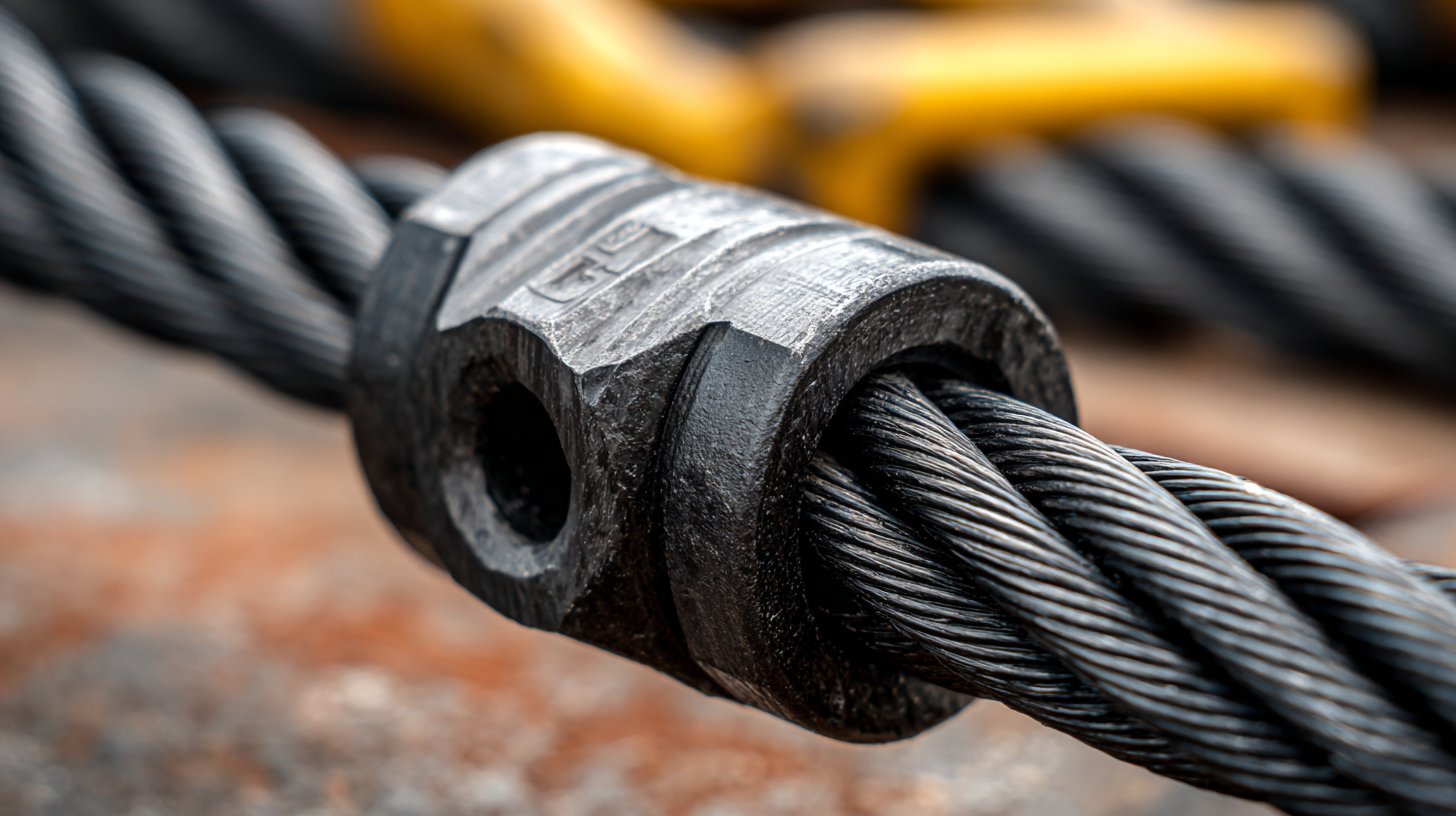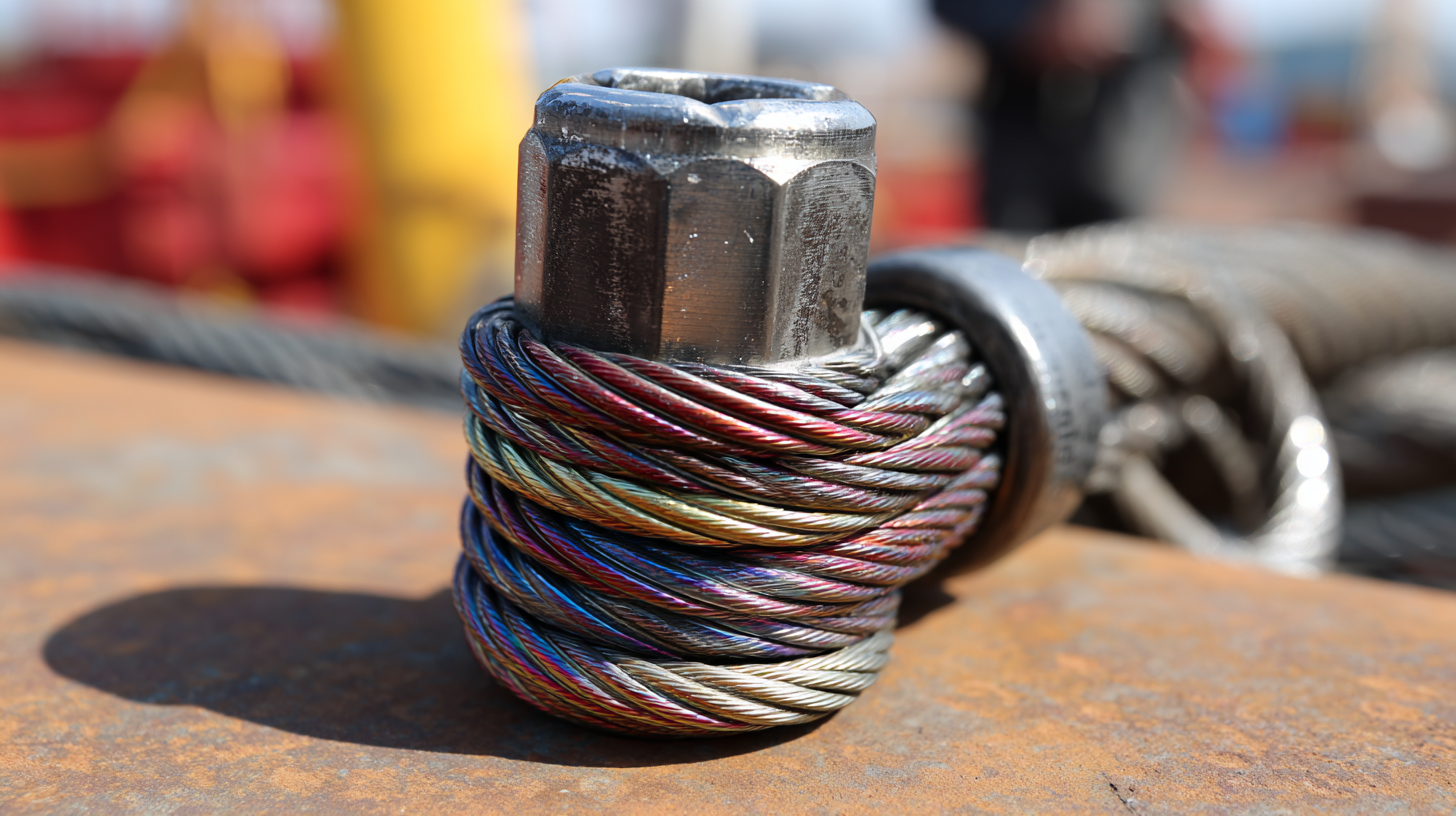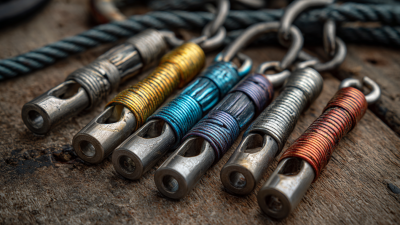When selecting the appropriate Wire Rope Swaged Socket for your project, it is essential to consider the specific demands imposed by the task at hand. According to a report by the Industrial Wire Rope Association, the efficiency and safety of lifting operations hinge significantly on the compatibility and quality of wire rope fittings, with a staggering 70% of lifting failures attributed to improper equipment selection. Furthermore, a survey conducted by the American Society of Mechanical Engineers highlights that projects using optimized wire rope components can enhance load-bearing capacity by up to 30%. Therefore, understanding the various types of swaged sockets available, their material compositions, and their appropriate application settings will ensure improved performance and durability in your lifting operations. This guide aims to equip you with the necessary knowledge to make an informed choice in sourcing the right Wire Rope Swaged Socket for your specific needs.

 When it comes to selecting the right wire rope swaged socket for your project, understanding the various types and their uses is crucial. Wire rope swaged sockets are integral components in rigging that facilitate strong and reliable connections. They come in several types, including open sockets, closed sockets, and eye sockets, each designed for specific applications and load capacities. Open sockets are ideal for applications where quick connections are needed, while closed sockets offer enhanced load stability. Eye sockets provide versatility, allowing for various rigging configurations.
When it comes to selecting the right wire rope swaged socket for your project, understanding the various types and their uses is crucial. Wire rope swaged sockets are integral components in rigging that facilitate strong and reliable connections. They come in several types, including open sockets, closed sockets, and eye sockets, each designed for specific applications and load capacities. Open sockets are ideal for applications where quick connections are needed, while closed sockets offer enhanced load stability. Eye sockets provide versatility, allowing for various rigging configurations.
Tips: Always consider the working load limit (WLL) of the socket in relation to the load it will bear. It’s essential to choose a socket that can handle significantly more than the maximum anticipated load. Additionally, inspect the socket for signs of wear or damage before use to ensure optimal safety and performance.
Moreover, be mindful of the environment in which the socket will be used. If the application involves exposure to corrosive elements, selecting a socket made from corrosion-resistant materials can prolong its lifespan and maintain safety standards. Always follow manufacturer guidelines for installation to ensure proper functioning and reduce the risk of failure during operation.
When selecting a wire rope swaged socket for your project, several key factors must be considered to ensure optimal performance and safety. First, assess the load requirements of your application. Understanding the maximum load the socket will bear is crucial, as it needs to match or exceed the strength of the wire rope. Additionally, consider the diameter of the wire rope that will be used with the socket; they must be compatible to prevent issues during operation.
Another critical factor is the material quality of the swaged socket. High-quality materials, such as stainless steel or carbon steel, provide durability and resistance to corrosion, which is essential for outdoor or marine applications. Additionally, look for sockets that meet industry standards or certifications, as this can be a marker of reliability. Finally, think about the environmental conditions the socket will face, including temperature fluctuations and exposure to chemicals, as these can influence the longevity and effectiveness of the hardware in your project.

When selecting a wire rope swaged socket for your project, material selection plays a pivotal role, particularly in relation to the environmental conditions where it will be employed. Different materials react distinctly to external factors such as moisture, temperature, and corrosive substances. For instance, stainless steel sockets are highly favored in marine applications due to their resistance to rust and corrosion, making them ideal for environments exposed to saltwater. Conversely, if the application is likely to face extreme temperatures, a high-strength aluminum socket may be more suitable, as it can withstand thermal expansion without compromising performance.
Additionally, it’s crucial to consider the specific type of load and its frequency of use. Heavy-duty situations that are common in construction sites may benefit from forged steel sockets, which offer enhanced durability and strength. In contrast, environments that require lightweight solutions, such as in aerospace applications, may lean towards composite materials that provide excellent tensile strength while minimizing weight. Ultimately, matching the socket material to your project's unique environmental conditions ensures not only compliance with safety standards but also the longevity and reliability of the equipment in operation.
When it comes to installing wire rope swaged sockets, adhering to industry best practices is crucial to ensure safety and functionality. First, it is important to correctly match the wire rope diameter with the designated swaged socket size to maintain optimal load-bearing capacity. According to industry standards, the swaged socket should have a rated load that exceeds the maximum load of the application by at least a factor of five, thus providing a robust safety margin.
Proper installation techniques are equally vital. The alignment during the termination process must be precise, ensuring that the wire rope strands are uniformly distributed within the socket. Misalignment can lead to uneven stress distribution, increasing the risk of failure. Furthermore, the swaging procedure should be performed using a calibrated swage tool to achieve the necessary compression without damaging the wire rope structure. It’s also beneficial to inspect the installation post-process to identify any potential issues early on.
With the increasing use of wire ropes in various lifting systems, including ground and tower-mounted hoists, following these best practices not only enhances performance but also significantly contributes to the longevity of the equipment. Regular inspections and maintenance play a key role in ensuring that the wire rope swaged sockets remain in good working order throughout their service life, thus minimizing the risk of accidents in high-stakes environments.
When selecting a wire rope swaged socket for your project, understanding the relevant safety standards and regulations is crucial. These guidelines ensure that the components used in lifting applications meet the required strength and reliability. For instance, organizations such as the American National Standards Institute (ANSI) and the Occupational Safety and Health Administration (OSHA) have established specific requirements for the manufacturing and testing of wire rope slings and sockets. Compliance with these standards is not only a legal obligation but also critical for preventing accidents and ensuring the safety of personnel working in potentially hazardous environments.
Additionally, it is essential to consider the working load limits (WLL) specified by these standards, which indicate the maximum load that a swaged socket can bear during operation. To further enhance safety, regular inspections and maintenance of wire rope assemblies are mandated to detect wear or potential failure. By adhering to these safety standards and staying informed about best practices, you can make well-informed decisions that prioritize both project success and worker safety.






